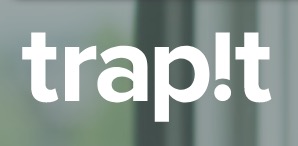
Best Practices for Employees on Social Media: Writing LinkedIn Updates
So, you know how to craft the perfect tweet. But do you know how to write the perfect LinkedIn update?
As you continue to develop your social network fluency, check out these eight dos and don’ts of writing updates for LinkedIn.
Do: Share Content.
99% of the top global brands have employees sharing content to their social networks. But there are other reasons for sharing content – beyond “everyone’s doing it.”
Think of how many of your conversations start with questions like, “Have you seen such and such video?” Or, “Have you read such and such article?”
Content is a conversation starter in today’s world. If you’re not finding and sharing good content, you’re missing out on conversations with potential buyers and business partners.
Do: Include URLs in Your Updates.
On LinkedIn, you can click on an article’s title to be sent to the article. So, it seems redundant to include a URL in your update, as well.
However, according to LinkedIn’s research, including the link can drive 2x more engagement.
Think about it. In a sea of black text, the blue URL calls attention to itself, enticing people to click on it. So, why not try a couple update where you leave the URL in your update?
Do: Stay Positive.
LinkedIn is a professional network, and when people use professional networks, they have a certain mindset.
Source: HubSpot
They’re looking to achieve their goals. They want to be inspired. They want success. They don’t want to stomach snark and negativity.
Do: Tag Your Connections in Your Updates or Comments.
It’s tempting to post a link and walk away. But remember that LinkedIn is a social site. You should seek engagement from your followers.
One way to do that is to start a conversation by tagging a follower or a company. Perhaps your connection wrote the article, or perhaps you want your colleague to give her take, or perhaps you think that the article will be helpful for someone.
To tag someone, use the @ symbol, and start typing the person’s name. A pop-up box will appear, and you can select the appropriate name from the list.
Don’t: Share Too Frequently.
There aren’t as many updates on LinkedIn as there are on Twitter. As you can imagine, the slower pace of your LinkedIn timeline has some key implications:
- Your LinkedIn timeline doesn’t turn over as quickly as Twitter does. Meaning that, if you post too frequently, you’ll annoy your followers.
- To get noticed on LinkedIn, you don’t have to post as frequently as you would on Twitter. It’s usually best to write an update between once and twice every day.
Don’t: Use Hashtags.
Why? Because LinkedIn doesn’t support hashtags.
They work on Twitter, Instagram, Google+, Facebook, Tumblr, and Pinterest.
But they don’t work on LinkedIn.
Don’t: Post Everything from Twitter to LinkedIn.
If you’re doing Twitter correctly, you’re using hashtags. Moreover, you’re probably posting several times every day on Twitter.
If you send all of your tweets to LinkedIn, you’ll annoy your followers. Their timelines will be full of your posts, with hashtags that don’t make sense on LinkedIn and with Twitter usernames that don’t exist on LinkedIn.
A good employee advocacy tool will help you avoid this problem because it will not allow you to share to multiple networks at once.
Don’t: Mistake a LinkedIn Update for Publishing a Post.
Think of a LinkedIn update (on the left) as a brief update. Perhaps you have a link you want to share or a photo, and you want to add some brief commentary.
A LinkedIn post (on the right), on the other hand, is much longer. Think of it like a blog with 300+ characters that gets added to the LinkedIn pulse network.
Give It a Try!
Go ahead, and write a status update now. As you do so, try to incorporate two of the suggestions above, and see what works for you.
If you have any good tips, leave a comment below. We’d love to hear them!
-Mark